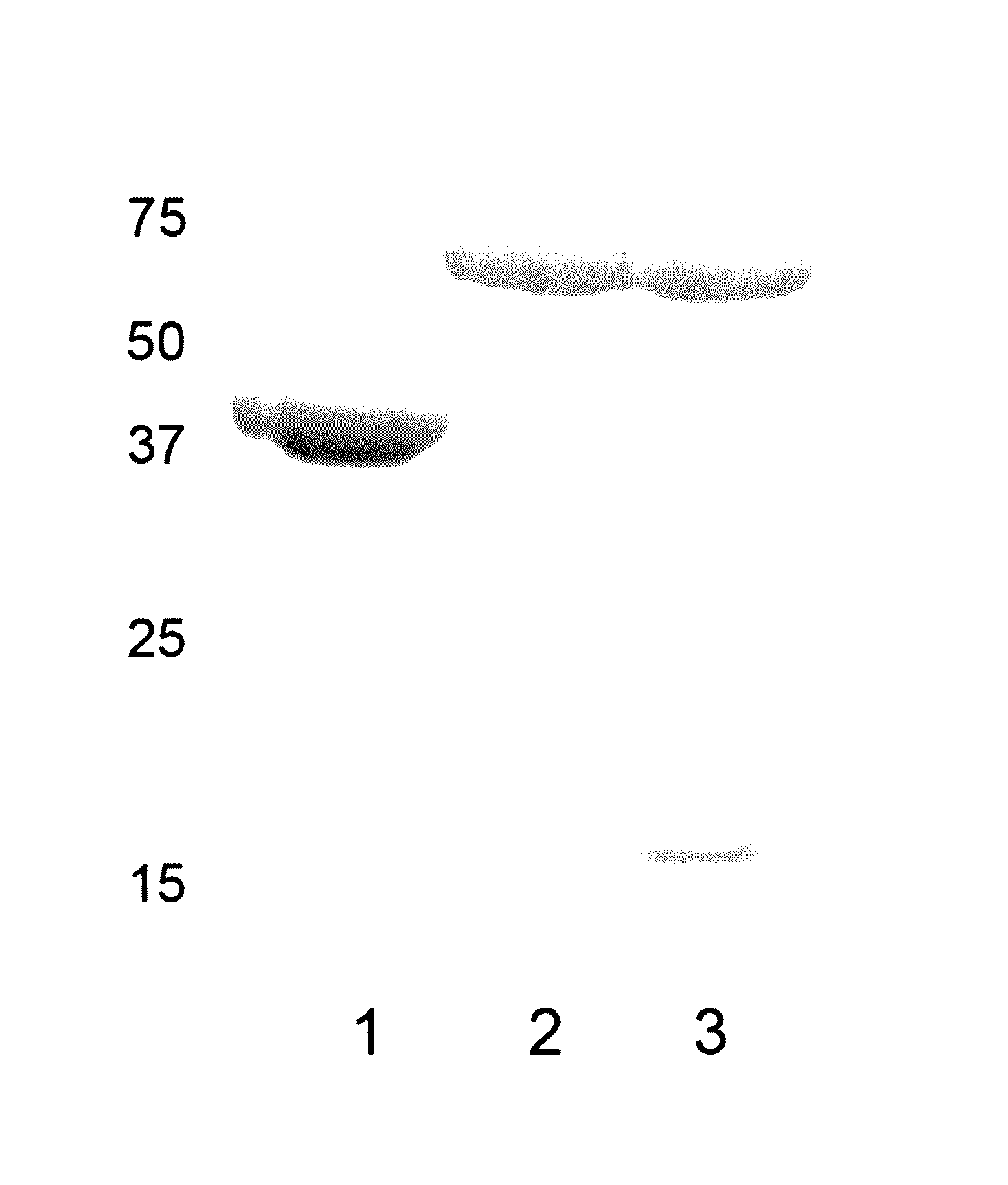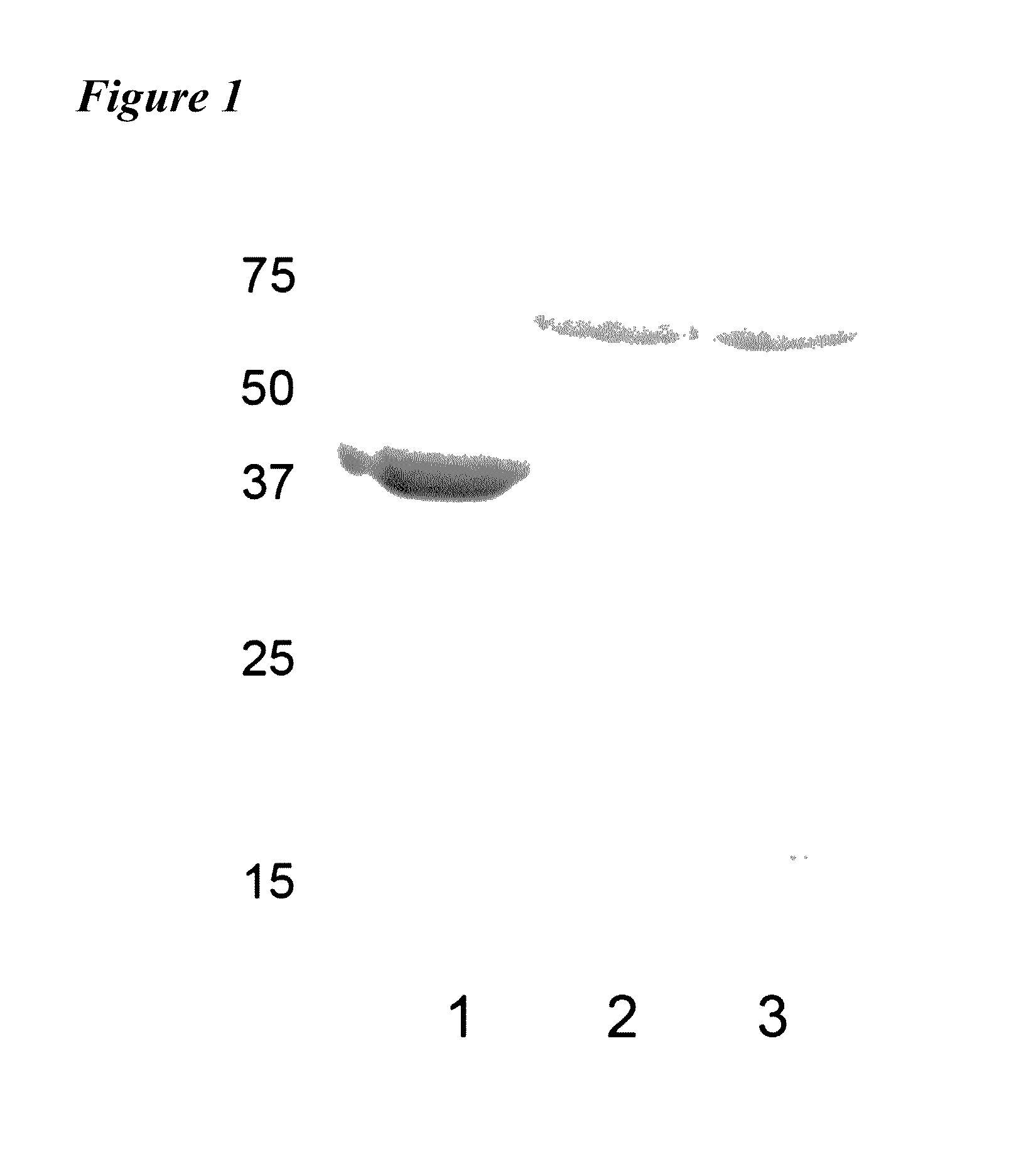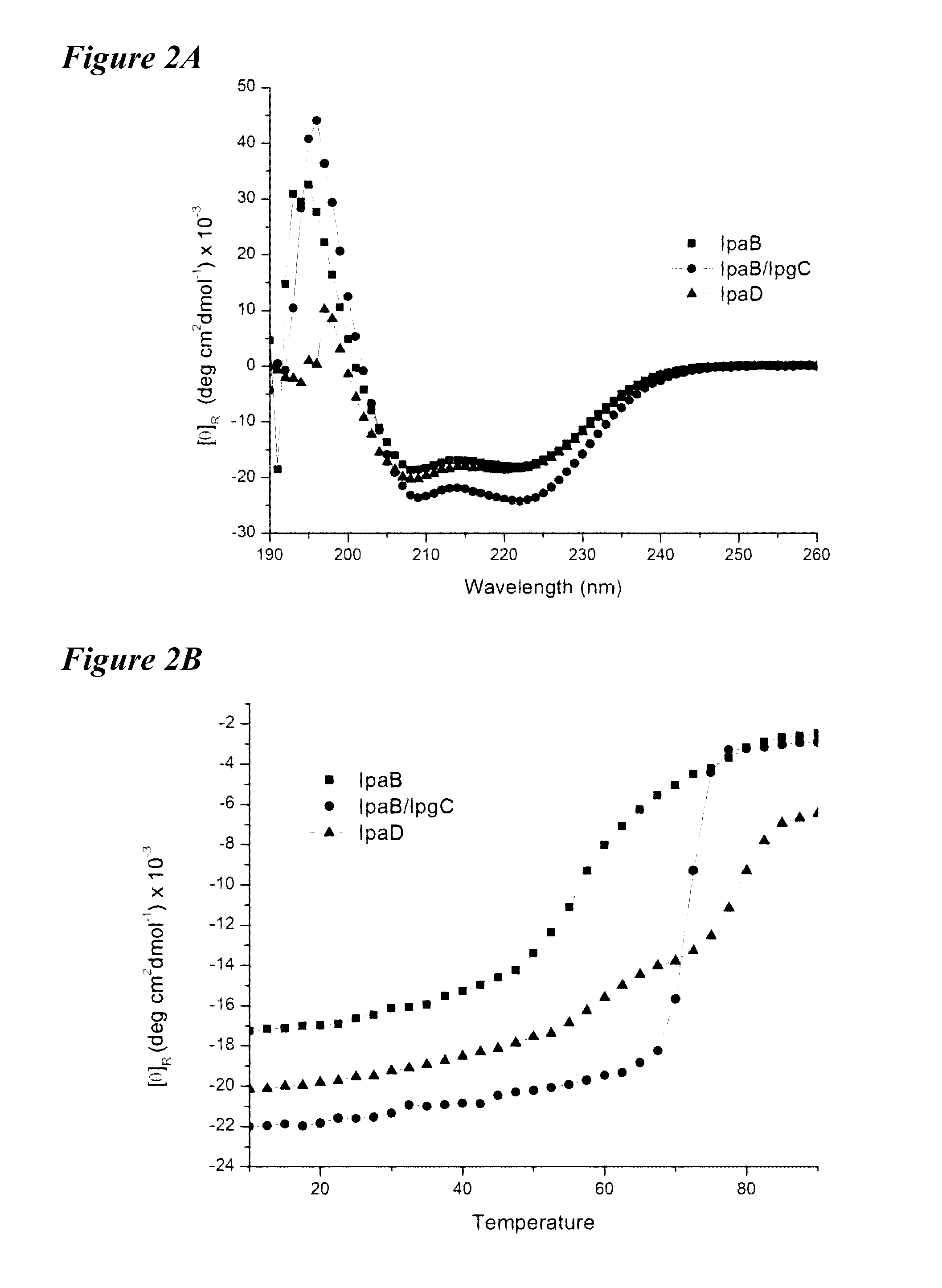Broadly protective Shigella vaccine based on type III secretion apparatus proteins
a secretion apparatus and broad protection technology, applied in the field of broad protection i > shigella /i > vaccine based on type iii secretion apparatus proteins, can solve the problems of high morbidity and mortality rate, association of shigellosis, and limit the efficacy of vaccines that are restricted to particular serotypes
- Summary
- Abstract
- Description
- Claims
- Application Information
AI Technical Summary
Benefits of technology
Problems solved by technology
Method used
Image
Examples
example 1
A Cross-Protective TTSA-Protein Shigella Vaccine
[0075]Shigella ssp. are food and water-borne pathogens that cause severe diarrheal and dysenteric disease associated with high morbidity and mortality. Individuals most often affected are children under 5 years of age in the developing world. The existence of multiple Shigella serotypes and the heterogenic distribution of pathogenic strains as well as emerging antibiotic resistance require the development of a broadly protective vaccine. All Shigella ssp. utilize a type III secretion system (TTSS) to initiate infection. The type III secretion apparatus (TTSA) is the molecular needle and syringe that forms the energized conduit between the bacterial cytoplasm and the host cell to transport effector proteins that manipulate cellular processes to benefit the pathogen. IpaB and IpaD form a tip complex atop the TTSA needle and are required for pathogenesis. Because they are common to all virulent Shigella, they are ideal candidate antigens ...
example 2
Generation of an IpaD-IpaB Chimeric (Fusion) Protein
[0117]Two proteins sit at the tip of the Shigella TTSA needle. IpaD resides at the top of the TTSA needle; however, upon activation of IpaD, IpaB mobilizes to a position at the needle tip distal to IpaD and is responsible for host cell contact by Shigella. These two proteins are exposed to the immune system and are thus prime vaccine candidates.
[0118]Example 1 describes purification of IpaD and IpaB via His-tag technology using pET plasmid vectors (commercially available from Novagen). While IpaD can be purified by standard methods, IpaB requires co-expression with its chaperone IpgC in a method similar to that published by Birket, et al. (Biochemistry [2007] 46:8128-8137). In order to release IpgC from IpaB, the detergent OPOE was added. OPOE is not a GRAS reagent and therefore must be removed from the purification scheme or replaced. Therefore, in addition to IpaD and IpaB alone, the IpaB / IpgC complex was used to vaccinate mice i...
example 3
Further Characterization of Chimeric IpaD-IpaB Fusion Protein
[0121]Additional testing and characterization of the IpaD-IpaB fusion protein (also referred to as “DB” or “DB fusion”) has also been carried out. In one experiment, mice were divided into 4 groups, A, B, C and D, and immunized as follows: Group A: 12 μg IpaB+7 μg IpaD+2.5 μg dmLT; Group B: 20 μg DB fusion+2.5 μg dmLT; Group C: 20 μg DB fusion; and Group D: PBS (control). Intranasal immunization was performed at days 0, 14 and 28. Serum IgG levels were monitored at days 0, 14, 28, 42 and 56. At Day 56, selected mice were euthanized and ASC and IFNγ secretion were analyzed, and other mice were challenged with either S. flexneri or S. sonnei.
[0122]Serum IgG levels in the mice at days 0, 14, 28, 42 and 56 are presented in FIGS. 13 A and B. Serum was obtained from immunized animals and antibody titers against IpaB and IpaD were determined by ELISA. As can be seen, the antibody titers against IpaB and IpaD elicited by the DB f...
PUM
| Property | Measurement | Unit |
|---|---|---|
| pH | aaaaa | aaaaa |
| pH | aaaaa | aaaaa |
| pH | aaaaa | aaaaa |
Abstract
Description
Claims
Application Information
 Login to View More
Login to View More - R&D
- Intellectual Property
- Life Sciences
- Materials
- Tech Scout
- Unparalleled Data Quality
- Higher Quality Content
- 60% Fewer Hallucinations
Browse by: Latest US Patents, China's latest patents, Technical Efficacy Thesaurus, Application Domain, Technology Topic, Popular Technical Reports.
© 2025 PatSnap. All rights reserved.Legal|Privacy policy|Modern Slavery Act Transparency Statement|Sitemap|About US| Contact US: help@patsnap.com



